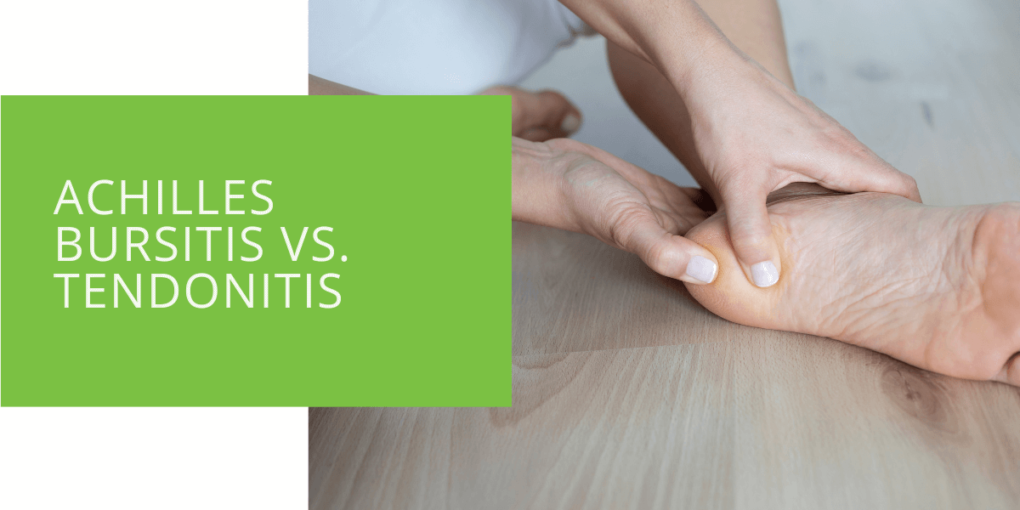Achilles Bursitis vs. Tendonitis
Achilles bursitis and tendonitis are common foot and ankle conditions that can cause significant discomfort and affect mobility. It is crucial to differentiate between the two to ensure accurate diagnosis and appropriate treatment. This article comprehensively explains Achilles bursitis and tendonitis, including their causes, symptoms, diagnostic procedures, and treatment options.
Achilles Tendonitis: Causes, Symptoms, and Diagnosis
Achilles tendonitis refers to the inflammation of the Achilles tendon, which connects the calf muscle to the heel bone. Overuse, repetitive strain, and biomechanical factors are common causes. Symptoms include pain, swelling, and stiffness along the back of the heel. Diagnosis involves a thorough physical examination and, in some cases, imaging tests such as X-rays to rule out other conditions like arthritis.
Achilles Bursitis: Causes, Symptoms, and Diagnosis
On the other hand, Achilles bursitis occurs when the bursa, a fluid-filled sac near the Achilles tendon, becomes inflamed. This condition is often referred to as retrocalcaneal bursitis, as it affects the area behind the heel bone. Overuse, friction, and repetitive movements can lead to bursitis. Symptoms include pain, swelling, and tenderness at the back of the heel. Diagnosis is typically done through physical examination, where the podiatrist will assess the affected area and perform specific tests to evaluate the bursa.
Differentiating Achilles Tendonitis and Bursitis
Understanding the differences between Achilles tendonitis and bursitis is crucial for accurate diagnosis and effective treatment. While both conditions involve inflammation in the Achilles region, they affect different anatomical structures. Tendonitis primarily affects the Achilles tendon, while bursitis involves inflammation of the bursa near the tendon. Identifying the specific location of pain and swelling helps healthcare professionals determine the underlying condition and develop a suitable treatment plan.

Treatment Options for Achilles Tendonitis
Non-surgical treatment options for Achilles tendonitis focus on reducing inflammation, relieving pain, and promoting healing. Resting the affected leg, applying ice packs, and using compression techniques can help reduce swelling and inflammation. Physical therapy exercises are often prescribed for strengthening the calf muscles, improving flexibility, and correcting any biomechanical issues contributing to the condition. Orthotic devices, such as shoe inserts or heel lifts, may be recommended to support and reduce stress on the Achilles tendon.
Treatment Options for Achilles Bursitis
Similarly, non-surgical treatment options are available for Achilles bursitis. Resting the affected leg and avoiding activities that exacerbate symptoms is crucial. Applying ice packs and compression techniques can help reduce swelling and inflammation in the bursa. Physical therapy exercises focusing on stretching and strengthening the surrounding muscles can alleviate pressure on the bursa. In some cases, corticosteroid injections may reduce inflammation and provide temporary relief.
When to Seek Help from an Ankle Specialist
If symptoms persist or worsen despite conservative measures, it is essential to consult an ankle specialist or podiatrist. These healthcare professionals can provide an accurate diagnosis, determine the condition's underlying causes, and offer appropriate treatment options. In some cases, advanced imaging tests, such as X-rays or MRIs, may be ordered to assess the severity of the condition and guide treatment decisions. For severe or chronic cases, surgical intervention may be considered.
Preventive Measures and Self-Care
Preventing Achilles bursitis and tendonitis involves taking proactive measures to reduce the risk of overuse and inflammation. Gradually increasing activity levels, incorporating proper warm-up and cool-down routines, wearing appropriate footwear, and avoiding excessive strain on the Achilles tendon are crucial. Stretching the calf muscles before and after physical activity helps maintain flexibility and reduce tension. It is also important to listen to your body and address any discomfort promptly to prevent the development of these conditions.
Conclusion
Understanding the differences between Achilles bursitis and tendonitis is vital for accurate diagnosis and effective treatment. While both conditions involve inflammation around the Achilles region, they affect different structures. Through proper diagnosis and comprehensive treatment plans, individuals can find relief, reduce inflammation, and restore optimal foot and ankle function. If you experience persistent symptoms or have concerns about Achilles bursitis or tendonitis, consult an ankle specialist or podiatrist for personalized care and guidance. Taking preventive measures and seeking appropriate treatment can promote healing, reduce the risk of future occurrences, and maintain foot and ankle health.
Key Takeaways
- Achilles bursitis and tendonitis are distinct conditions that involve inflammation in different structures of the Achilles region.
- Accurate diagnosis is crucial for effectively treating and managing Achilles bursitis and tendonitis.
- Non-surgical treatment options, such as rest, physical therapy, and proper footwear, significantly relieve symptoms and promote healing.

